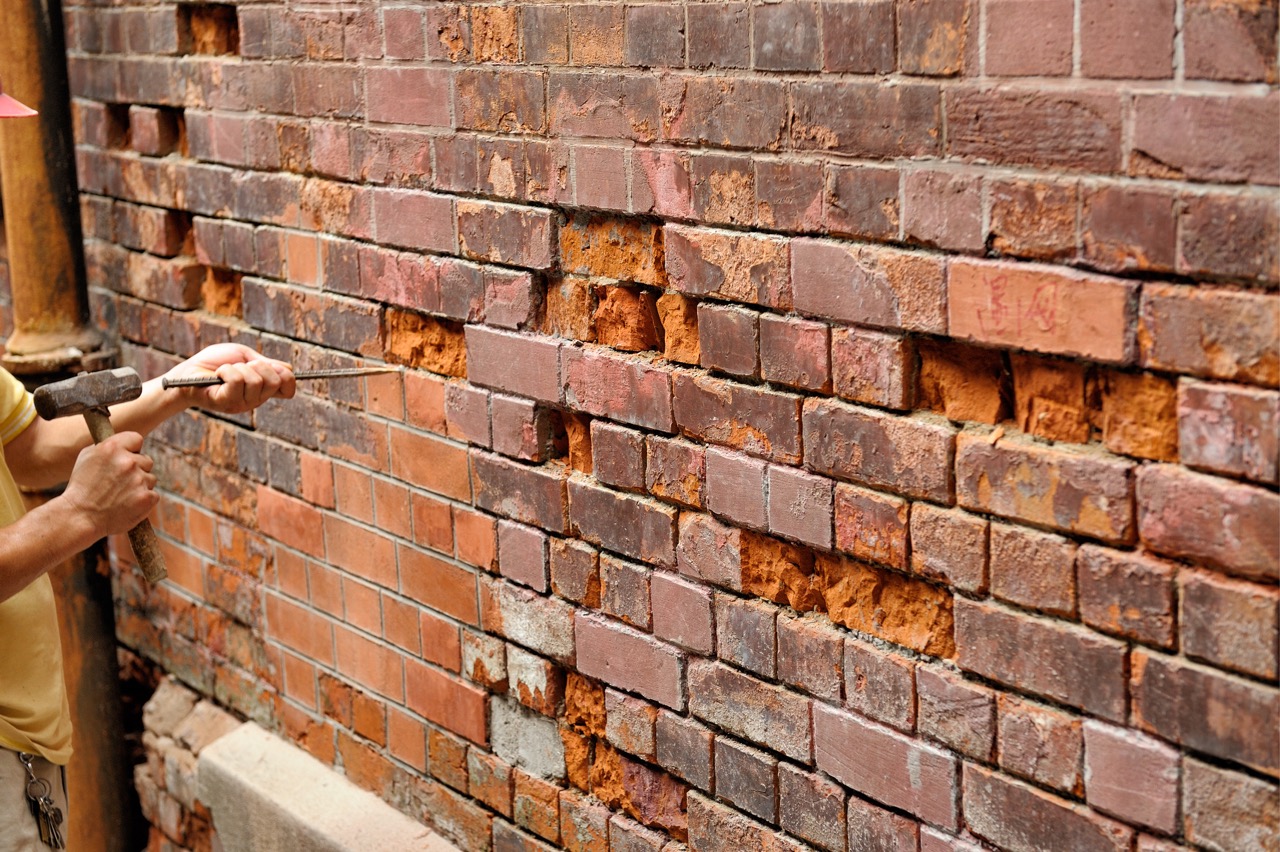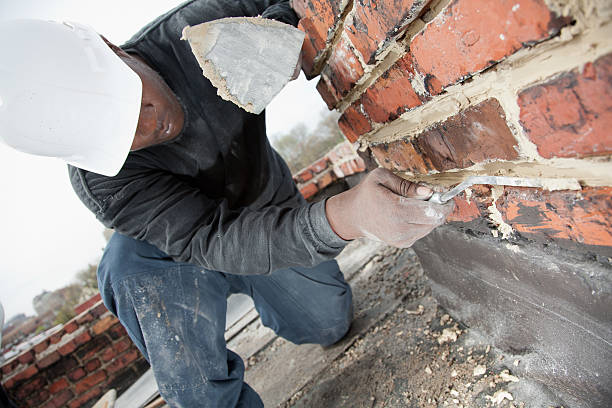Chimney Flashing and Cap Repair: Safeguard Your Home from Aspects
Chimney Flashing and Cap Repair: Safeguard Your Home from Aspects
Blog Article
Opening the Tricks of Sustainable Stonework Building And Construction Practices for Eco-Friendly Structures
In the world of contemporary construction, the search of sustainable techniques has come to be critical. Amongst the myriad techniques to environment-friendly structure, sustainable masonry construction stands apart as a reliable and sturdy approach that holds a riches of untapped capacity. From the option of products to cutting-edge building methods, the secrets to attaining sustainability within masonry construction are diverse and intriguing. By checking out the benefits, products, methods, and future fads of lasting stonework, a much deeper understanding of how these practices can form the future of environmentally friendly structures emerges.
Advantages of Sustainable Stonework Construction
Accepting lasting stonework building and construction techniques not just reduces environmental effect but likewise provides long-term financial benefits to home builders and communities. By using materials like recycled bricks, obstructs, and stones, contractors can substantially lower the carbon impact of their tasks while promoting resource performance. Furthermore, sustainable stonework building and construction strategies, such as proper insulation and thermal mass properties, can enhance power performance within buildings, causing reduced operational expenses with time.
Additionally, the longevity and strength of masonry structures add to long-term economic benefits. Structures built making use of sustainable masonry techniques frequently need much less upkeep and repair, equating to cost financial savings for contractors and homeowner. The durability of stonework products likewise guarantees that frameworks continue to be secure and secure, lowering the demand for frequent renovations or substitutes.
Eco-Friendly Stonework Materials
Utilizing environment-friendly stonework materials is a critical step in the direction of boosting the sustainability of construction methods and reducing ecological influence while making best use of lasting economic advantages. Sustainable masonry products are sourced, created, and made use of in a manner that lowers total environmental impact. Products such as recycled bricks, recovered stone, and sustainable cinder block are becoming significantly popular choices for eco-conscious contractors. Recycled blocks, as an example, not just divert waste from garbage dumps but additionally need much less energy to generate compared to new bricks. Recovered rock offers an unique aesthetic appeal while minimizing the demand for new quarrying. Lasting concrete obstructs integrate recycled aggregates and might include better insulation residential or commercial properties, adding to power performance in buildings.
Furthermore, all-natural products like adobe, rammed earth, and straw bales supply outstanding thermal mass residential properties, reducing the demand for home heating and cooling down power. These materials are typically in your area available, advertising regional economic climates and decreasing transportation-related carbon emissions. By choosing environment-friendly masonry materials, building tasks can substantially decrease their environmental footprint and contribute to the development of healthier, a lot more sustainable built settings.
Energy-Efficient Masonry Strategies
Energy performance plays a critical duty in boosting the sustainability of stonework building techniques. By executing energy-efficient stonework strategies, contractors can substantially decrease the total power intake of a my company building, bring about lower operational expenses and a smaller sized ecological impact. One vital energy-efficient stonework method is using thermal mass, which entails including thick materials like concrete or brick into the structure's structure to absorb and store heat. This aids manage interior temperature levels, minimizing the requirement for mechanical heating and cooling systems.

Developments in Lasting Masonry
Current developments in lasting masonry techniques have produced ingenious methods that are reshaping the building industry. One such innovation is the advancement of self-healing concrete, which utilizes germs embedded within the concrete to recover splits autonomously. This development not just decreases upkeep prices but additionally enhances the durability of masonry frameworks, adding to their sustainability.
One more notable innovation is using recycled aggregates in stonework construction - masonry contractor. By including products such as crushed ceramic waste or recycled glass into concrete blends, building contractors can lower the environmental effect of building and construction projects while keeping structural stability. This technique not only draws away waste from landfills however likewise saves natural deposits, making it a crucial advancement in sustainable stonework construction
Moreover, the assimilation of electronic layout devices, such as Building Info Modeling (BIM), is reinventing the method stonework frameworks are intended and created. BIM permits for even more specific calculations, reduced product wastage, and enhanced energy effectiveness, eventually leading to more sustainable building methods. These developments jointly indicate a promising future for sustainable stonework building in the age of eco-friendly buildings.
Future Trends in Stonework Sustainability
With read the full info here the innovative strides made in sustainable stonework techniques, the future fads in masonry sustainability are positioned to more change the construction sector. One of the key trends forming the future of stonework sustainability is the boosted combination of technology. Advancements such as Building Details Modeling (BIM) and online truth simulations are being utilized to maximize stonework building processes, leading to reduced product waste and enhanced energy efficiency in structures.
In addition, the growth of unique sustainable materials is readied to play a substantial role in improving the eco-friendliness of stonework building and construction. masonry contractor. Innovations like self-healing concrete, recycled aggregates, and bio-based binders are obtaining grip for their capacity to minimize ecological influence while keeping structural honesty

Verdict
In conclusion, lasting stonework building and construction methods supply numerous benefits for environment-friendly structures. By making use of eco-friendly materials and energy-efficient techniques, stonework can add to a much more lasting constructed setting. Innovations in lasting stonework are continually being developed to further enhance the ecological efficiency of structures. Looking in the direction of the future, the fad of stonework sustainability is anticipated to grow, bring about more ecologically friendly and energy-efficient building methods in the years to find.
Report this page